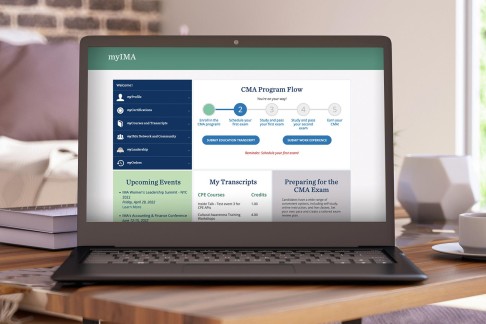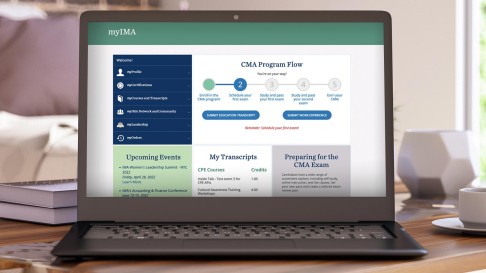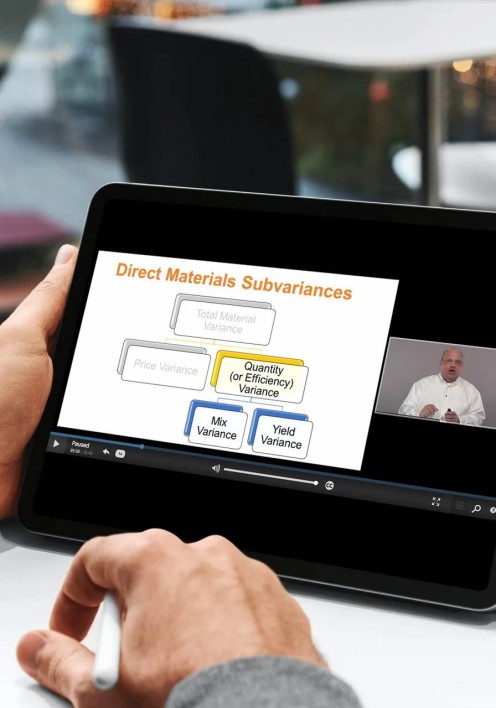CIA is the only globally recognized internal audit certification. For more than 40 years, the CIA designation has reflected competence in the principles and practices of internal auditing.
CIA is the certification, most valued by employers of internal audit professionals. Becoming a CIA is the optimum way to communicate knowledge, skills, and competencies needed to effectively carry out professional responsibilities for any internal audit, anywhere in the world.
The CIA exam consists of three parts: Part 1 "Essentials of Internal Auditing", Part 2 "Practice of Internal Auditing" and Part 3 "Business Knowledge for Internal Auditing". The CIA qualification is awarded to candidates who successfully pass all 3 challenging exams.
CIA Part 1 corresponds well with the International Professional Practices Framework (IPPF) and includes six areas covering the internal audit fundamentals; independence and objectivity; professionalism and professional due care; quality assurance and improvement programs; governance, risk management and control; and fraud risks. The CIA Part 1 exam tests candidates' knowledge, skills and abilities related to the International Standards for the Professional Practice of Internal Auditing, specifically the Quality Attributes Standards (1000, 1100, 1200 and 1300 series) and Performance Standard 2100.
CIA Part 2 includes four sections focused on managing the internal audit activity, planning the engagement, performing the engagement, communicating the results of the engagement, and monitoring. Part 2 tests candidates' knowledge, skills and abilities related to performance standards (2000, 2200, 2300, 2400, 2500, and 2600 series) and current internal audit practices.
CIA Part 3 includes four sections focusing on basic business knowledge, investments, information security, information technology, and financial management.
The CIA certification provides professionals with the following important knowledge and practical skills.

The CIA part 1 course syllabus includes the following sections: foundation of internal auditing - 15%, independance and objectivity - 15%, proficency and due professional care - 18%, quality assurance and improvement program - 7%, governance, risk management and control - 35%, fraud risks - 10%.
Lesson 1: Essentials of Internal Audit
The mission of internal audit. Study of the basic principles of professional practice of internal audit. Requirements of the Regulations (Charter) on Internal Audit. The difference between assurance and consulting services provided by internal audit. The IIA Code of Ethics.
Lesson 2. Independence and Objectivity
Organizational independence of internal audit. Objectivity of the individual internal auditor, including determining whether the individual internal auditor has any threats to objectivity. Policies that ensure objectivity.
Lesson 3. Professionalism and due professional diligence
The knowledge, skills, and competencies required to fulfill the internal auditor's responsibilities. Due professional diligence. The competence of the individual internal auditor acquired through continuing professional development.
Lesson 4: Quality Assurance and Quality Improvement Program
The necessary elements of a quality assurance and improvement program. Requirements for reporting the results of the quality assurance and improvement program to the board or other governing body. Disclosure of compliance and noncompliance with the MPSEA.
Lesson 5. Governance, Risk Management and Controlling
The concept of organizational governance. Control environment and risk, and control individual assignments. Many ethics and compliance issues, alleged violations and intentions. Corporate Social Responsibility. Fundamental concepts of risk and the risk management process.
Lesson 6. Risks of Fraud
Fraud risks and types of fraud. Fraud risk detection and management. Controls to prevent, detect fraud and to increase an organization's awareness of fraud. Internal audit techniques and roles related to fraud investigation.
Lesson 7: Part 1 final lesson.
Repetition of all topics covered in previous lessons. Practice Questions. Test-taking strategies and time management. Preparation for the CIA Part 1 exam.
The CIA part 2 course syllabus includes the following sections: managing the internal audit activity - 20%, planning the engagement - 20%, performing the engagement - 40%, communicating engagement results and monitoring progress - 20%.
Lesson 1. Managing internal audit. Planning
Policies and routines for planning, organizing, directing and monitoring internal audit activities. Various administrative activities (budgeting, resourcing, staffing, etc.) of internal audit.
Lesson 2. Developing a Risk-Oriented Internal Audit Plan
Selecting sources of potential internal audit engagements. Risk management framework for assessing risks and prioritizing audit engagements based on risk assessment results. Types of assurance engagements. Types of consulting engagements. Coordination of internal audit with external audit, regulatory oversight bodies and other control functions, and the ability to leverage the work of other assurance providers.
Lesson 3: Communicating results and reporting to senior executive management and the board
Informing management of the audit plan, seeking approval. Significant areas of risk, control and governance on which the head of internal audit should report to the board. Features of the overall effectiveness of internal control and risk management - report to management. Key performance indicators on which the head of internal audit reports periodically to senior executive management and the board of directors.
Lesson 4. Planning the assignment
Defining the purpose of the assignment evaluation criteria and scope of the assignment. Planning the engagement to ensure key risks and controls are identified. Detailed risk assessment for each audit area, including evaluation and prioritization of risk factors and controls. Assignment procedures and prepare a work program. Level of staff and resources required for assignments.
Lesson 5. Performing the assignments
Data collection: risk and control checklists and questionnaires as part of a preliminary survey of audited activities. Sampling and statistical analysis techniques. Analysis and evaluation. Significance, sufficiency and reliability of potential sources of evidence. Analytical approaches and methods of process comparison, analytical review. Working papers and documentation of relevant information to support the findings and results of the engagement, conclusions about the results of the engagement, including assessment of risks and controls.
Lesson 6: Oversight performed on the assignment
Informing about Assignment Results and Risk Acceptance. Preliminary communication with clients on the results of the assignment. Preparation of interim reports on the progress of the assignment. Development of recommendations to improve the organization's performance, increase and maintain its value. Process for communicating the results of the audit engagement and reporting, including the responsibility of the head of internal audit for assessing residual risk. Process for communicating risk acceptance. Performance Monitoring: Evaluating the results of the engagement, including management's action plan, Managing the monitoring and tracking the status of the results of the audit engagement communicated to management and the Board of Directors.
Lesson 7: Part 2 Final Lesson.
Repetition of all topics covered in previous lessons. Practical issues. Test-taking strategies and time management. Preparation for the CIA Part 2 exam.
The CIA part 3 course syllabus includes the following sections: business acumen (organizational objectives, behavior, and performance; organizational structure and business processes; data analytics) - 35%, information security - 25%, information technolodgy (application and system software, IT infrastructure and IT control frameworks, disaster recovery) - 20%, financial management (financial accounting and finance, managerial accounting) - 20%.
Lesson 1: Basic business knowledge
Strategic planning and key business areas. Common performance indicators. Organizational behavior and various performance management techniques. Traits of an effective manager: leadership, personnel management, commitment to the organization and having entrepreneurial skills.
Lesson 2: Organizational structure and business processes
The impact of risk management and control organization in different organizational structures. Risk management and control organization issues of common business processes. Methods of project management. Forms and elements of contracts. Data analysis: types, types of controls, value of analysis, data analysis process, application of data analysis techniques in internal audit.
Lesson 3: Information Security
Types of common physical security controls. Forms of user authentication and authorization controls. The purpose and use of various information security controls. Data privacy laws and their potential impact on data security policies and practices. Emerging technologies and their impact on security. Existing and emerging information security risks, cybersecurity and information security policies.
Lesson 4: Information Technology
Application and system software. Basic database terms. Basic characteristics of system software. Basic IT infrastructure and networking concepts. Operational role of the network administrator, database administrator, and help desk. Application of IT management organization concepts. Disaster recovery: approaches to disaster recovery base planning. Purpose of data and systems backup tools, data and systems recovery procedures.
Lesson 5. Financial Accounting and Finance
Concepts and basic principles of financial accounting. Existing and new concepts of financial accounting. Financial Analysis. Revenue cycle, ongoing asset management activities and accounting, and supply chain management. Capital budgeting, capital structure, basic taxation and transfer pricing.
Lesson 6. Management Accounting
General concepts of management accounting. Definition of cost accounting systems. Known types of costs and their use in decision making.
Lesson 7: Part 3 final lesson.
Repetition of all the topics covered in the previous stages. Practice questions. Test-taking strategies and time management. Preparation for the CIA Part 3 exam.
Ms Qurashvili, PhD, has 17 years of experience delivering various courses at universities and institutes, working in senior positions for pharmaceutical companies, and preparing and submitting financial statements. While working in the public sector, she served as an advisor in the affairs of the Social Security of Youth and Young Families, Department of Youth Affairs of Georgia. As a project manager, Ms Qurashvili has collaborated with organizations such as Save the Children (USA), the Swiss Agency for Development and Cooperation in the South Caucasus (Switzerland), and the Bureau of Population, Refugee, and Migration (USA). Ms Qurashvili is the founder and director of Pharmacy Ltd as well as Lotus Ltd, a micro-manufacturing company. Currently, she also holds the position of an associate professor at ALTE and Ken Walker International Universities and is an invited professor at the University of Georgia. Additionally, she is an author of several scientific publications.

Lessons are conducted ONLINE in real time on the ZOOM platform. Trainees can communicate with the tutor and colleagues and ask clarifying questions during the training. A virtual whiteboard is used to demonstrate calculations, graphs and diagrams during each lesson. A presentation with the main ideas of each topic is shown. Study materials, practical tasks and tests, CIA books are provided. After the lesson all participants receive a video recording of the lesson and an informative and comprehensive notes from the tutor. The training process includes testing on each topic to consolidate the material covered and to practice solving exam tasks. Each student is given access to a personal account of the learning system with the ability to monitor progress.
CIA training in Georgia. Courses, test, exam, qualification, certificate | HOCK

Candidates for CIA certification must complete 3 examination parts. Part 1 of the exam contains 125 multiple-choice questions, Parts 2 and 3 - 100 multiple-choice questions. The time for Part 1 is 2.5 hours, for Parts 2 and 3 is 2 hours. A candidate must answer approximately 75% of the questions correct in order to pass the exam.

To be approved into the CIA program, the candidate must either: hold a Bachelor’s degree or higher, or hold an active Internal Audit Practitioner designation, or possess five years of internal audit experience, or be an active student in your final year of college. To qualify you must provide a written recommendation from their supervisor / employer or Certified Internal Auditor. Candidates must have two years of experience in the field of internal audit or quality Assurance, risk management, audit/assessment/disciplines, compliance, external audit, internal control. Candidates may apply to the certification program and sit for exams prior to obtaining the required work experience. However, candidates will not be certified until unless the experience requirement is met within the program eligibility period.


That you will get by applying for CIA courses at Hock International: